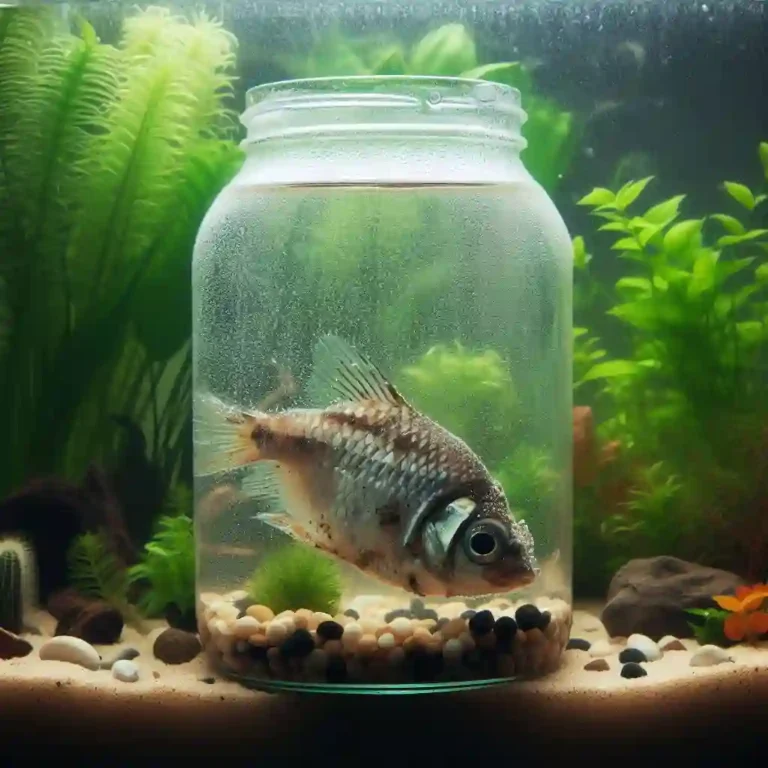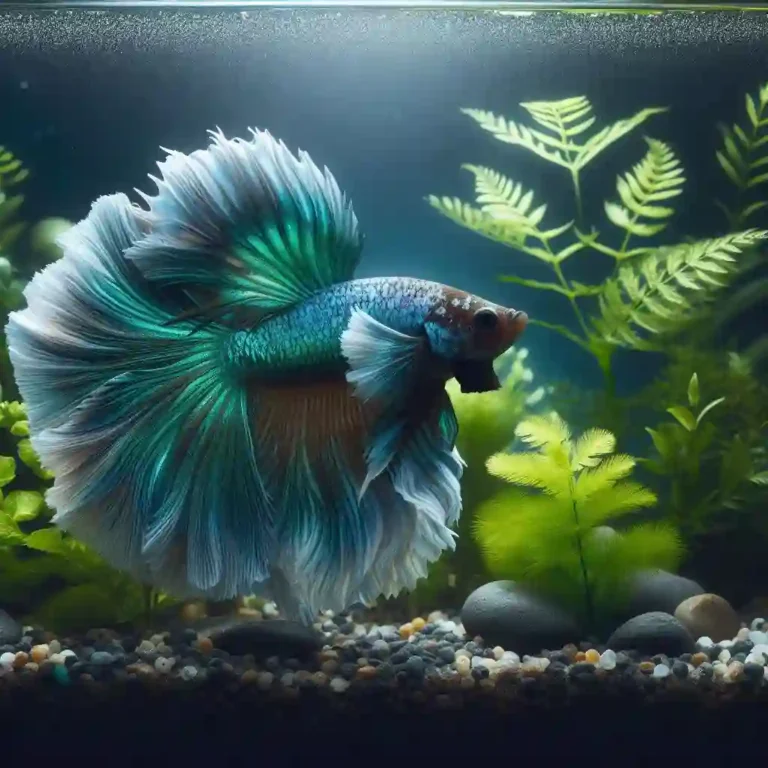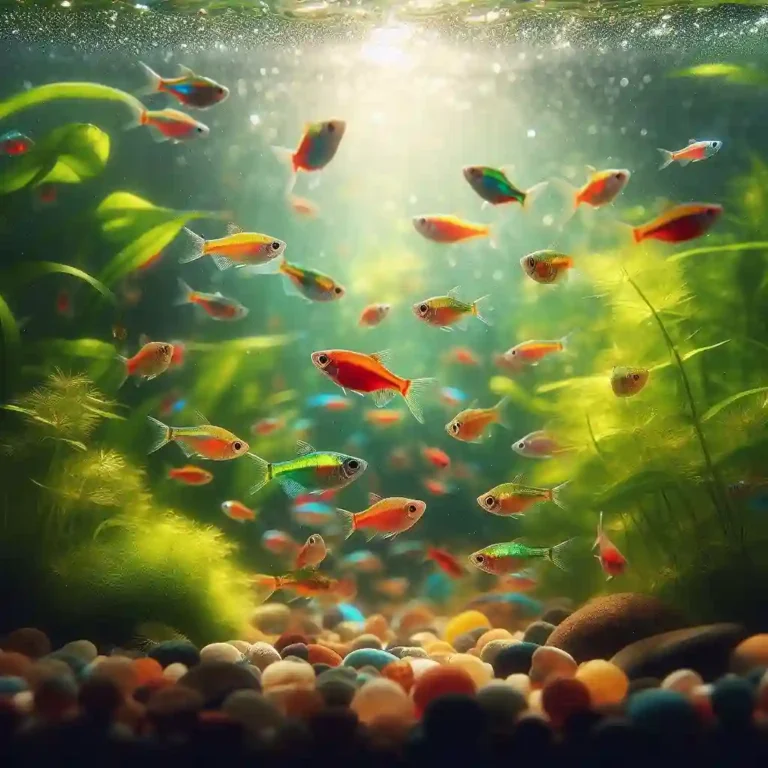Pregnant Cherry Barb: How to Identify and Care for Your Fish
Pregnant Cherry Barb: Cherry barbs are one of the most popular freshwater aquarium fish, and breeding them can be a rewarding experience for aquarists of all levels.
However, it’s essential to provide the right environment and care for your pregnant cherry barb to ensure a healthy and successful spawn.
In this article, we’ll guide you through the signs of pregnancy in cherry barbs, how to create a suitable breeding environment, and provide expert tips on caring for your pregnant female and her soon-to-be-hatched fry.
Pregnant Cherry Barb: A Quick Guide
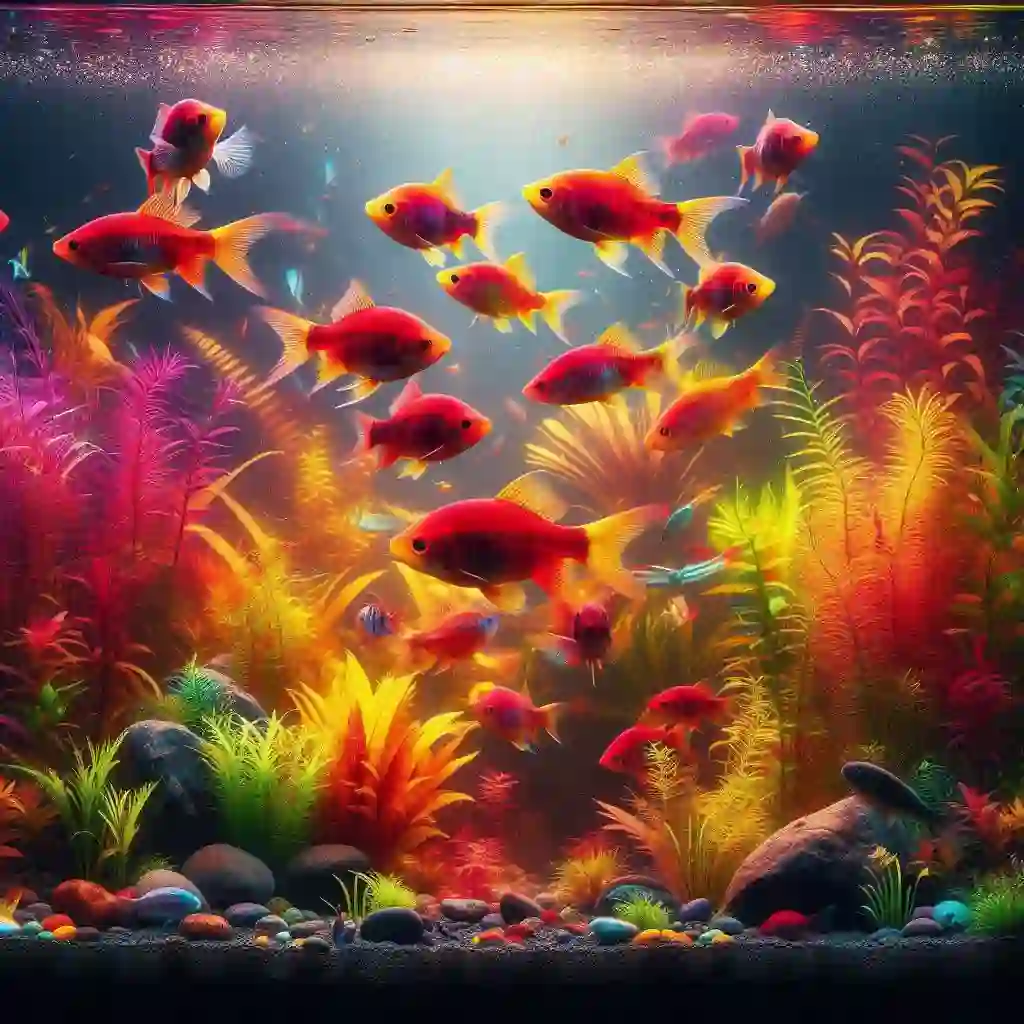
Recognizing Pregnancy:
- Swollen belly
- Darkening of the belly
- Changes in behavior, such as increased appetite or aggression
Optimal Water Conditions:
- Temperature: 72°F to 82°F (22°C to 28°C)
- pH: 6.5 to 7.5
- Water hardness: 5-10 dGH
- Regular water changes (25-50% every 1-2 weeks)
Diet and Nutrition:
- High-quality flake or pellet food
- Live or frozen brine shrimp or bloodworms as treats
- Vegetable-based foods, such as spirulina or algae flakes
Breeding and Spawning:
- Separate the male and female Cherry Barbs
- Provide a spawning site, such as a plant or spawning mop
- Monitor for spawning and separate the eggs
Caring for the Fry:
- Provide a separate tank for the fry
- Feed the fry infusoria or rotifers, and later, commercial fry food
- Monitor water quality and perform regular water changes
Common Health Issues:
- Dropsy
- Fungal infections
- Bacterial infections
- Nutritional deficiencies
- Stress and anxiety
Post-Pregnancy Care:
- Separate the female Cherry Barb from the male and other fish
- Provide a quiet environment and high-quality food
- Monitor for signs of stress or infection
Recognizing the Signs of Pregnancy
Physical Changes:
- Swollen Belly: A pregnant Cherry Barb’s belly will become noticeably swollen as the eggs develop. This is usually the most obvious sign of pregnancy.
- Darkening of the Belly: The belly area may darken in color as the eggs mature.
- Changes in Body Shape: The fish’s body shape may become more rounded or triangular as the eggs grow.
Behavioral Changes:
- Increased Appetite: Pregnant Cherry Barbs may eat more frequently or aggressively as they need more nutrients to support the developing eggs.
- Changes in Swimming Pattern: Pregnant females may swim more slowly or erratically as they become more cumbersome.
- Increased Aggression: Some pregnant Cherry Barbs may become more aggressive or territorial as they prepare to defend their eggs.
Other Signs:
- Nesting Behavior: Some Cherry Barbs may start preparing a nesting site, such as cleaning a flat rock or plant leaf, in anticipation of laying their eggs.
- Changes in Coloration: Some females may display more vibrant or intense coloration as they prepare to spawn.
Optimal Water Conditions for a Healthy Pregnancy
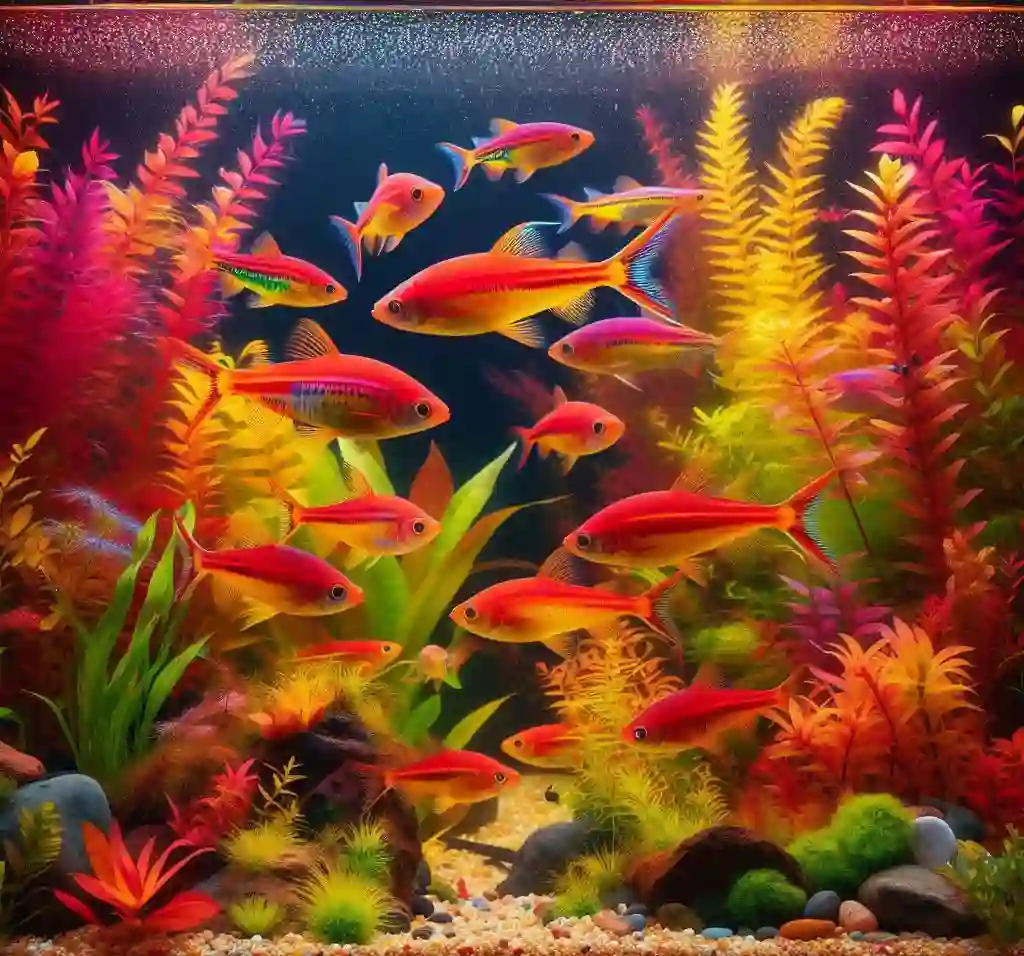
Water Temperature:
- Ideal Range: 72°F to 82°F (22°C to 28°C)
- Avoid Sudden Changes: Gradual temperature changes are essential to prevent stress on the pregnant Cherry Barb.
Water pH:
- Ideal Range: 6.5 to 7.5
- Stable pH: Maintain a stable pH to prevent stress and ensure a healthy environment for the developing eggs.
Water Hardness:
- Ideal Range: 5-10 dGH (degree of General Hardness)
- Soft to Moderate Water: Cherry Barbs thrive in soft to moderately hard water, which helps to reduce stress and promote healthy development.
Water Quality:
- Regular Water Changes: Perform regular water changes (25-50% every 1-2 weeks) to maintain excellent water quality and prevent the buildup of toxins.
- Monitor Ammonia and Nitrite: Ensure these parameters are always at 0 ppm to prevent harm to the pregnant Cherry Barb.
Water Flow and Oxygenation:
- Moderate Water Flow: Provide a moderate water flow to simulate the natural environment and promote healthy circulation.
- Adequate Oxygenation: Ensure the aquarium has adequate oxygenation to support the increased oxygen demands of the pregnant Cherry Barb.
Other Considerations:
- Avoid Overcrowding: Ensure the aquarium is not overcrowded, as this can lead to stress and decreased water quality.
- Provide Hiding Places: Offer plenty of hiding places and plants to reduce stress and provide a sense of security for the pregnant Cherry Barb.
Diet and Nutrition for a Pregnant Cherry Barb
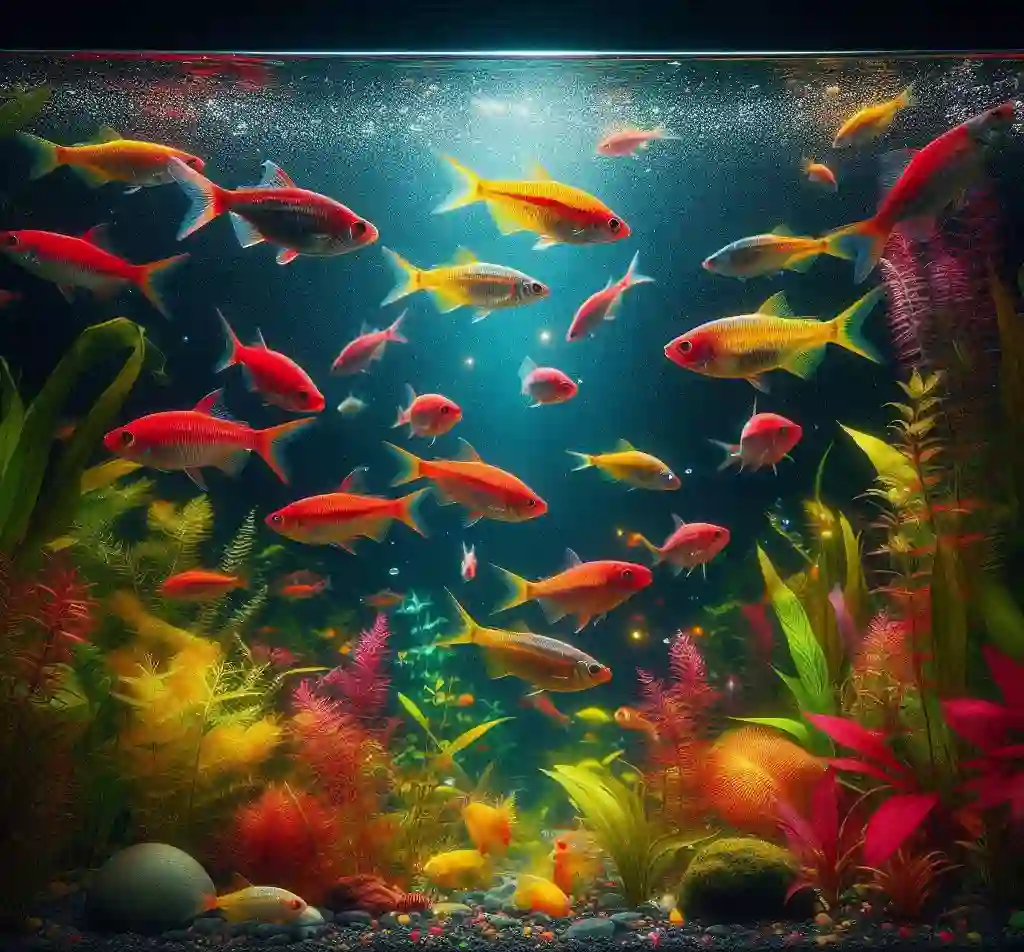
Nutritional Requirements:
- Protein-Rich Foods: Pregnant Cherry Barbs require a diet rich in protein to support the development of their eggs.
- Vitamin and Mineral Supplements: Ensure the diet is supplemented with essential vitamins and minerals, such as calcium, phosphorus, and vitamin D, to support egg development and overall health.
Recommended Foods:
- High-Quality Flakes or Pellets: Feed a high-quality, nutrient-rich commercial flake or pellet specifically formulated for small, peaceful fish like Cherry Barbs.
- Live or Frozen Brine Shrimp: Supplement with live or frozen brine shrimp, which are rich in protein and omega-3 fatty acids.
- Bloodworms: Offer bloodworms as an occasional treat, rich in iron and protein.
- Vegetable-Based Foods: Provide vegetable-based foods, such as spirulina or algae flakes, to support overall health and digestion.
Feeding Frequency and Quantity:
- Feed 2-3 Times a Day: Feed your pregnant Cherry Barb 2-3 times a day, only as much as they can consume within 1-2 minutes.
- Monitor Food Intake: Monitor food intake and adjust feeding quantities accordingly to prevent overfeeding and maintain water quality.
Avoid Overfeeding:
- Prevent Overfeeding: Avoid overfeeding, as this can lead to digestive issues, poor water quality, and stress on the pregnant Cherry Barb.
- Remove Uneaten Food: Remove any uneaten food after feeding to prevent decay and maintain water quality.
Additional Tips:
- Variety is Key: Provide a varied diet to ensure your pregnant Cherry Barb receives a broad range of nutrients.
- Avoid Foods High in Fat: Avoid feeding foods high in fat, as these can lead to digestive issues and poor health.
- Consult a Breeding Expert: Consult with a breeding expert or experienced aquarist for personalized dietary advice tailored to your specific situation.
Creating a Safe and Stress-Free Environment
Provide a Peaceful Environment:
- Avoid Aggressive Tankmates: Ensure the pregnant Cherry Barb is not harassed or stressed by aggressive tankmates.
- Separate from Fin-Nippers: Keep the pregnant Cherry Barb separate from fin-nipping fish, such as tiger barbs or serape tetras.
Optimize Tank Decorations:
- Plenty of Hiding Places: Provide plenty of hiding places, such as plants, rocks, or decorations, to reduce stress and create a sense of security.
- Visual Barriers: Use visual barriers, like plants or decorations, to block the line of sight between the pregnant Cherry Barb and other fish.
Maintain Good Water Quality:
- Regular Water Changes: Perform regular water changes (25-50% every 1-2 weeks) to maintain excellent water quality and reduce stress.
- Monitor Water Parameters: Regularly monitor water parameters, such as ammonia, nitrite, and nitrate levels, to ensure a safe environment.
Reduce Noise and Vibrations:
- Avoid Placing the Tank Near Noisy Areas: Place the tank in a quiet area, away from noisy appliances, children, or pets.
- Use a Tank Stand or Mat: Use a tank stand or mat to reduce vibrations and noise from the aquarium.
Maintain a Consistent Lighting Schedule:
- Simulate Natural Daylight: Provide a consistent lighting schedule that simulates natural daylight, with a gradual transition from day to night.
- Avoid Sudden Changes: Avoid sudden changes in lighting, as this can cause stress and disrupt the pregnant Cherry Barb’s natural behavior.
Minimize Handling and Netting:
- Avoid Netting: Minimize netting and handling the pregnant Cherry Barb, as this can cause stress and injury.
- Use a Soft Net: If netting is necessary, use a soft, fine-mesh net to minimize stress and injury.
Understanding the Breeding Process
The Mating Process:
- Natural Mating: Cherry Barbs are egg-layers and will naturally mate in a well-planted aquarium with a suitable mate.
- Spawning Trigger: The male Cherry Barb will perform a complex courtship display to trigger spawning, which typically occurs in the morning.
Spawning and Egg-Laying:
- Egg-Laying: The female Cherry Barb will lay her eggs, usually in a protected area, such as a plant or a spawning mop.
- Egg Count: A healthy female Cherry Barb can lay up to 200-300 eggs per spawn.
- Egg Size: The eggs are typically 0.5-1.0 mm in diameter and are transparent or yellowish in color.
Fertilization and Incubation:
- Fertilization: The male Cherry Barb will fertilize the eggs, and the eggs will begin to develop.
- Incubation: The eggs will incubate for approximately 24-48 hours, depending on water temperature and quality.
Hatching and Fry Development:
- Hatching: The eggs will hatch, and the larvae will emerge.
- Fry Development: The larvae will absorb their yolk sac and begin to swim and feed on their own after 2-3 days.
Parental Care:
- No Parental Care: Cherry Barbs do not provide parental care to their young, and the fry are left to fend for themselves.
- Fry Predation: The parents may eat their own fry, so it’s essential to separate the fry from the adults to ensure their survival.
Breeding Tips:
- Conditioning: Condition the breeding pair with a varied diet and optimal water conditions to increase the chances of successful spawning.
- Water Changes: Perform regular water changes to maintain excellent water quality and reduce stress on the breeding pair.
- Monitor Water Parameters: Regularly monitor water parameters, such as pH, ammonia, and nitrite levels, to ensure a safe environment for breeding.
Caring for the Fry
Initial Care:
- Separate the Fry: Separate the fry from the adults to prevent predation and ensure their survival.
- Provide a Safe Environment: Provide a safe and stable environment for the fry, with plenty of hiding places and plants to reduce stress.
Feeding the Fry:
- Infusoria or Rotifers: Feed the fry infusoria or rotifers, which are small enough for them to consume, 2-3 times a day.
- Newly Hatched Brine Shrimp: After 2-3 days, introduce newly hatched brine shrimp as a food source.
- Commercial Fry Food: Gradually introduce commercial fry food, such as powdered or liquid fry food, as the fry grow.
Water Changes and Maintenance:
- Daily Water Changes: Perform daily water changes (10-20% every day) to maintain excellent water quality and prevent disease.
- Monitor Water Parameters: Regularly monitor water parameters, such as ammonia, nitrite, and nitrate levels, to ensure a safe environment for the fry.
Growth and Development:
- Monitor Growth: Monitor the fry’s growth and development, and adjust feeding and water changes accordingly.
- Provide Hiding Places: Provide plenty of hiding places, such as plants or decorations, to reduce stress and promote healthy growth.
Common Issues:
- Fungal Infections: Monitor for fungal infections, which can be treated with commercial fungal treatments.
- Bacterial Infections: Monitor for bacterial infections, which can be treated with commercial bacterial treatments.
Common Health Issues in Pregnant Cherry Barbs
Dropsy:
- Symptoms: Swollen belly, labored breathing, and lethargy.
- Causes: Bacterial infection, poor water quality, or nutritional deficiencies.
- Treatment: Improve water quality, provide a balanced diet, and consider antibiotics.
Fungal Infections:
- Symptoms: White, cotton-like growths on the body, fins, or gills.
- Causes: Poor water quality, stress, or injury.
- Treatment: Use commercial fungal treatments, improve water quality, and maintain good water circulation.
Bacterial Infections:
- Symptoms: Ulcers, redness, or inflammation on the body or fins.
- Causes: Poor water quality, stress, or injury.
- Treatment: Use commercial bacterial treatments, improve water quality, and maintain good water circulation.
Nutritional Deficiencies:
- Symptoms: Lethargy, weight loss, or poor coloration.
- Causes: Inadequate diet, poor water quality, or lack of essential nutrients.
- Treatment: Provide a balanced diet, supplement with essential nutrients, and improve water quality.
Stress and Anxiety:
- Symptoms: Erratic swimming, hiding, or lethargy.
- Causes: Changes in water temperature, pH, or other environmental factors.
- Treatment: Maintain stable water conditions, provide plenty of hiding places, and reduce stressors.
Egg Binding:
- Symptoms: Difficulty laying eggs, swollen belly, or lethargy.
- Causes: Poor water quality, nutritional deficiencies, or genetic predisposition.
- Treatment: Improve water quality, provide a balanced diet, and consider separating the female from the male.
Other Health Issues:
- Fin Rot: Fungal or bacterial infection of the fins, causing rot or decay.
- Velvet Disease: Parasitic infection causing gold dust-like spots on the body.
- Ich: Parasitic infection causing white spots on the body.
Post-Pregnancy Care and Recovery
Immediate Post-Pregnancy Care:
- Separate the Female: Separate the female Cherry Barb from the male and other fish to prevent stress and harassment.
- Provide a Quiet Environment: Provide a quiet and peaceful environment to reduce stress and promote recovery.
- Monitor Water Quality: Monitor water quality and perform regular water changes to maintain excellent water quality.
Nutritional Support:
- High-Quality Food: Provide high-quality food rich in protein and essential nutrients to support recovery.
- Vitamin and Mineral Supplements: Consider adding vitamin and mineral supplements to the diet to support recovery.
Reducing Stress:
- Provide Hiding Places: Provide plenty of hiding places, such as plants or decorations, to reduce stress and promote recovery.
- Maintain Stable Water Conditions: Maintain stable water conditions, including temperature, pH, and water hardness, to reduce stress.
Monitoring Health:
- Monitor for Infections: Monitor for signs of infection, such as labored breathing, lethargy, or changes in appetite.
- Watch for Signs of Stress: Monitor for signs of stress, such as erratic swimming, hiding, or changes in coloration.
Recovery Timeframe:
- 1-2 Weeks: Allow the female Cherry Barb 1-2 weeks to recover from the spawning process.
- Monitor Progress: Monitor the female’s progress and adjust care accordingly.
Breeding Again:
- Wait 2-3 Months: Wait 2-3 months before breeding the female Cherry Barb again to allow for full recovery.
- Monitor Health: Monitor the female’s health and adjust breeding schedules accordingly.
FAQs
Q: How long does it take for a Cherry Barb to spawn?
A: Cherry Barbs can spawn within 2-3 weeks of maturity, but this can vary depending on factors such as water quality, diet, and genetics.
Q: How many eggs can a Cherry Barb lay?
A: A healthy Cherry Barb can lay up to 200-300 eggs per spawn, depending on factors such as water quality, diet, and genetics.
Q: How long does it take for Cherry Barb eggs to hatch?
A: Cherry Barb eggs typically take 24-48 hours to hatch, depending on water temperature and quality.
Q: How long does it take for Cherry Barb fry to grow?
A: Cherry Barb fry can grow rapidly, reaching maturity in 2-3 months with proper care and nutrition.
Q: Can I keep Cherry Barbs with other fish?
A: Yes, Cherry Barbs can be kept with other peaceful, small fish, but it’s essential to research compatible species and provide a suitable environment.
Q: How often should I feed my Cherry Barbs?
A: Feed your Cherry Barbs 2-3 times a day, only as much as they can consume within 1-2 minutes.
Q: What is the ideal water temperature for Cherry Barbs?
A: The ideal water temperature for Cherry Barbs is between 72°F to 82°F (22°C to 28°C).
Q: How often should I perform water changes?
A: Perform regular water changes (25-50% every 1-2 weeks) to maintain excellent water quality and reduce stress on your Cherry Barbs.

Hello, I’m Aria Cooper, the heart and soul behind Swimmy Buddies. As a devoted fish aficionado, I share my aquatic adventures and expertise to inspire your own underwater explorations. 🐠🌊


